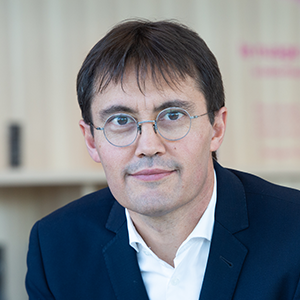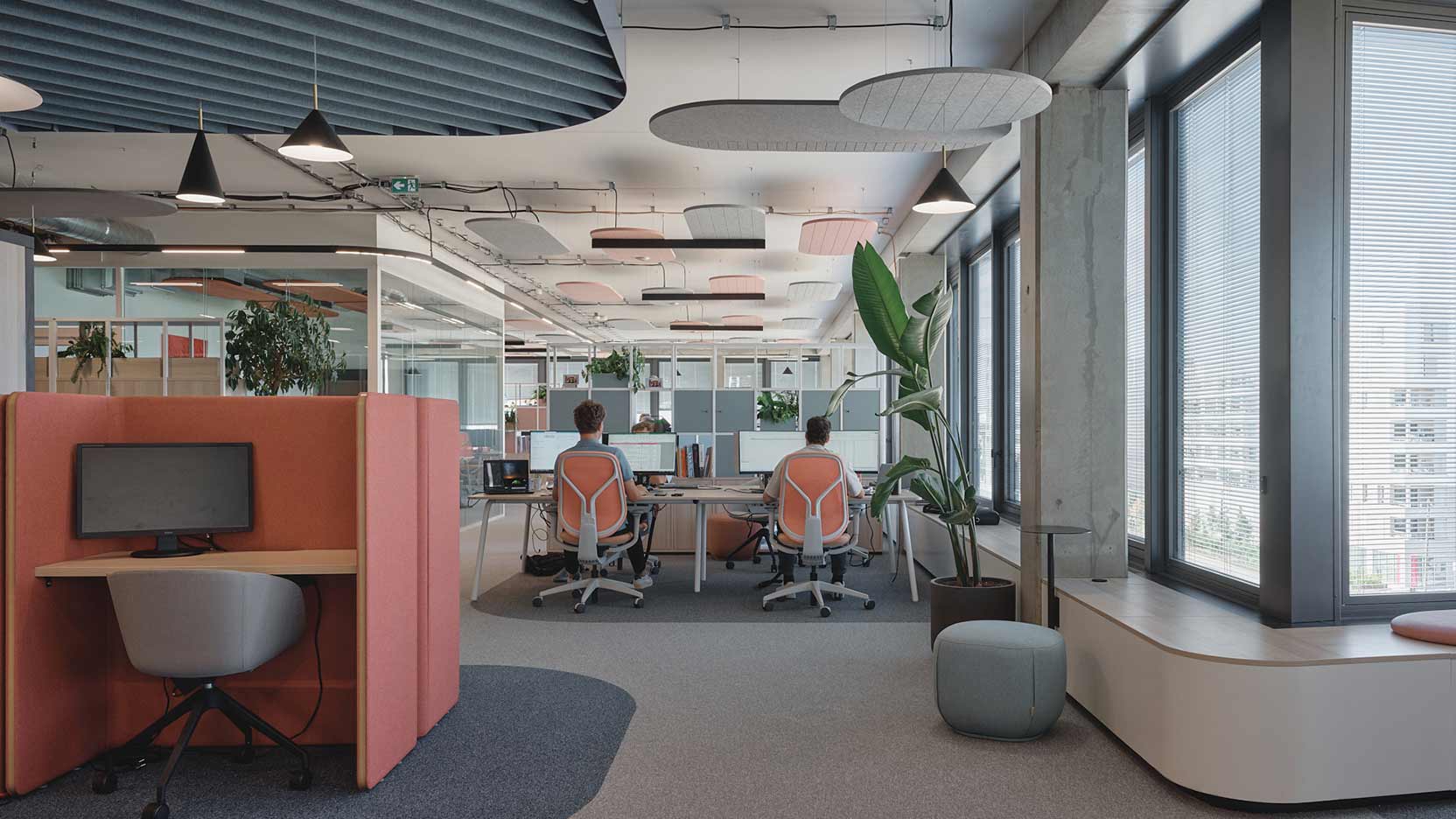Derived from the Group’s industrial model, the Smart Active System technology reduces the carbon footprint of buildings, improves energy efficiency, and offers optimal comfort for occupants
Smart Active System: an innovation born from GA Smart Building’s integrated model
For over twenty years, GA Smart Building has been designing its own comfort equipment through its subsidiary Equilab. This unique industrial expertise led to the creation of the Smart Active System — a solution that combines HVAC engineering, local energy production, and digital control to optimize the energy and carbon performance of buildings.
Designed, tested, and continuously improved within the Smart Active System Lab in Labège, this technology is based on measurement, data, and real-world usage experimentation.
Deployed in flagship projects such as the Niwa Group headquarters in Toulouse, the Stellantis grEEn-campus in Poissy, and Les Gradins in the Athletes’ Village in Saint-Denis, it has now proven its reliability and relevance.
A complete solution for low-carbon, flexible, and comfortable buildings
Smart Active System: 3 Integrated Technological Building Blocks
The Smart Active System is composed of several modules, depending on the building it is implemented in:
-
Local and Renewable Energy Production: Geothermal energy, district heating networks, photovoltaic panels… When combined, these technologies optimize the building’s environmental impact from operational energy consumption.
-
Atom Active Floor Slabs: Provide gentle thermal comfort and high thermal inertia, limiting peak power demands.
-
LEAF Active Air Treatment Modules: Decentralized and silent, these autonomous facade-integrated air treatment units reduce ductwork, free up ceiling height, and enable localized control of air quality.
-
Galaxy Building Management System (BMS): A management system that collects all data related to ambient conditions, consumption, and building operations. It offers contextual visualizations and allows interaction with equipment.
-
Model Predictive Control (MPC) Module: Complementing the BMS, this artificial intelligence module uses learning and forecasting to optimize the building’s overall performance and make the most of the equipment. It also ensures comfort levels in each space, taking occupancy rates and weather conditions into account.
Together, these modules form a decarbonized, reversible, and intelligent energy ecosystem.
The benefits of the Smart Active System
The Smart Active System developed by GA Smart Building offers multiple benefits — for investors and building owners, operators, and occupants alike:
-
Reduced Carbon Footprint: Approximately -30% of embedded carbon in the HVAC package compared to traditional systems, by reducing the size, weight, and density of technical installations, which are typically carbon-intensive (up to 30% of the carbon weight in a new tertiary building).
-
Controlled Comfort and Air Renewal at All Levels: The combination of active slabs and LEAF air modules allows for full control of comfort parameters — thermal, acoustic, air quality — at the scale of each space. In addition, the predictive smart control anticipates potential deviations to maintain a high service level in all situations.
-
Energy Excellence: Around 20% reduction in energy consumption and HVAC peak power compared to traditional systems, achieved through optimized water temperature regimes, the use of slab inertia, and ultra-low-power decentralized ventilation.
-
Freedom of Interior Layout: Greater ceiling height, flexible spaces, and no technical constraints.
-
ESG Compliance: Contributes to meeting RE2020, the Tertiary Decree, the BACS Decree, and aligns with the European Taxonomy‘s sustainability criteria.
-
Simplified Maintenance: Easy access to equipment, centralized supervision via Galaxy Pilot, and simplified technical monitoring through the MPC module.
Flagship example: Smart Active System in Niwa
The Group’s headquarters, Niwa in Toulouse, delivered in early 2024, is the first building to integrate the Smart Active System across approximately 4,800 m² of office space. Thanks to this solution, along with a thoughtful design and use of eco-sourced products, the building serves as a showcase of GA’s expertise, earning the HQE Excellent and BEPOS Effinergie 2017 labels.
Niwa specifically incorporates hybrid, low-carbon energy production, combining:
- A geothermal base (10 boreholes, each 150 meters deep) allowing interseasonal thermal storage via Accenta’s control software
- A temperate urban heating network powered 80% by renewable or recovered energy
After more than a year in operation, Niwa has delivered on all its promises:
- Maintained thermal comfort, even during heatwaves, with a thermal output of just 40 W/m² — compared to 60 to 80 W/m² in traditional designs
- Total energy consumption of around 70 kWh/m² (all uses combined) in the first year, including the urban network and secondary spaces (canteen, welcome area with amphitheater…)
- Optimized technical operation continuously ensured by the intelligent MPC control module
- 100% self-consumption of the photovoltaic electricity produced on the roof
The Smart Active System Lab: innovating through experimentation
To design and continuously optimize the Smart Active System, the Group established a dedicated R&D facility focused on energy: the Smart Active System Laboratory.
Located in Labège within the Group’s Equilab factory, the lab is a two-level, 160 m² instrumented test cell used to test, compare, and refine equipment under real usage conditions.
This experimental space reflects the Group’s philosophy: innovate, measure, improve, and share.
A recognized and supported innovation
The development and deployment of the Smart Active System align with the Group’s innovation strategy and its low-carbon roadmap.
The R&D project behind the Smart Active System, winner of the PI4-SEPAC innovation competition, received financial support from the France 2030 Investment Plan operated by ADEME.
The project also involved technological partnerships with renowned research bodies such as CSTB, data and AI experts, and environmental assessment consultancies. These partnerships confirmed the performance of each component of the Smart Active System, providing factual evidence aligned with industry standards such as RE2020.
With the Smart Active System software, GA Smart Building brings together industry, digital technology, and architecture to design buildings that are more efficient, smarter, and more comfortable — for the benefit of people and the climate.
Contact us to learn more or to visit the Smart Active System Lab in Labège.

Contact
David Bruchon
Engineering Director
